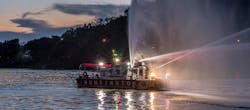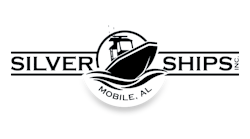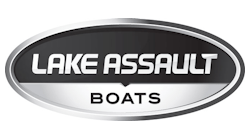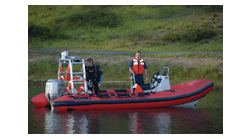When it Comes to Fire/Rescue Boats, Don't Go Overboard with Options
When fire departments start shopping for fire and rescue boats, they begin by looking at what is available and what their neighbors have. Sometimes they base decisions on something they may have seen somewhere, or on someone’s opinion on which companies make great fishing boats.
It’s natural and part of the process, but experts say it’s not the best way to select a boat for your particular fire department.
“One of the challenges departments face is having made pre-decisions about boats,” said Dave Hunt, head of business development for Silver Ships, a builder located in Mobile, AL. “Before they even sit down and talk about building a boat, they’ve already made some decisions. They’ve already had a boat, or seen one in a magazine, or noticed that Miami-Dade has a really good fire boat.”
That pre-determined design, before the bids even go out, may not be the best way to acquire a boat, Hunt said.
“Departments need to understand the environments that they are going to operate in, they need to know how many crew members might be on the boat, what kind of hull design is needed, and what size,” Hunt said. He said Silver Ships works with clients to include all those factors and match them to the best designs before the boat is built.
Another pitfall departments sometimes fall into is the syndrome of having a vessel doing too much, yet none of it well.
“Departments tend to want as much capacity as they can,” said Gary Smith, director of sales and marketing for Lake Assault Boats, a builder in Superior, WI.
Matthew Velluto, director of business development for Ribcraft USA, a builder in Marblehead, MA, agrees.
“It’s interesting how firefighters think they need a boat that can do everything for them,” Velluto said. “They buy a rescue boat and put fire equipment on them and it pretty much makes them non-functional,” he added. “A great fire boat does not make a great rescue boat. It’s just like a ladder truck and a pumper are not the same.”
Determining the mission
Velluto said fire departments need to look at boats like they look at land-based apparatus and pick what is needed to do the mission.
In that same light, Velluto said departments need to look at custom boats to make sure they are sufficiently durable to do the work needed.
“Departments sometimes go out and start looking at recreational boats,” Velluto said. Going to a local dealer that sells great fishing boats and getting a deal doesn’t make for a good fire/rescue boat, he said.
“It’s just like buying fire apparatus,” he said. “You don’t go to the local Ford dealership and buy an F-150 then head to the Home Depot and throw a couple of orange ladders and call it a fire truck. …it’s important to get the right boat to do the right job at the right time.”
“You beat on a boat when you’re doing a rescue because you’re focused on something else,” Velluto said. He added it’s not unusual to have three or four fire personnel leaning over the side of a craft on a rough day, or a fire pump flowing high volumes of water causing stability issues. Purpose-built boats are robust and stable enough to handle that use and abuse, he added.
“A boat built for rescues takes a lot of the worries out of the equation,” Velluto said. “They can go out when it’s raining, and rough and dark and go places they wouldn’t normally and maybe run aground. They are designed to handle that.”
Different types of boats
Each specific builder has its own designs and features and fire departments and responders need to carefully look at each craft to makes sure they meet the department’s particular needs. All three builders contacted by Firehouse for this story complement each other on building quality and safe vessels, but being competitors, they also like to point out proprietary features that set them apart.
For Velluto, Ribcraft makes a rigid, inflatable boat that has a hard, fiberglass hull with massive, fully inflatable tubes surrounding the edges. That allows Ribcraft to create boats with deep V hulls that are stabilized by the large tubes. The design makes for a stable boat that will allow responders to move from side to side, quickly and simultaneously without fear of capsizing the craft. He said a 15- to 19-foot boat, with four or five people on it, will remain perfectly level during operations. He added his boats work well in big breaking seas for surf rescues and similar operations. They also works well in protected waters, such as lakes and ponds, he said.
Fire departments need to take a hard look at where they will operate. Small, protected bodies of water are different than great lakes and open oceans and require different kinds of vessels and different power supplies. Even the climates make a difference. For instance, a boat operating in Florida might not need a high-power heating system or have worries about pump and fitting freeze ups, the experts said.
Even the kind of geography will make a difference, said Hunt. Understanding that draft of the boat will determine whether it will be able to navigate very shallow waters. A deep-V hull boat might be great for open waters, but not so much so for shallow, shoreline operations, he said.
“There are always trade-offs,” Hunt said, adding that responders need to look at the percentage of time and types of incidents the boat will be used in the majority of responses and design a boat for that application.
Velluto said considering the bulk of the calls the boat is going to be on is critical. Trying to make the boat do more than it was designed to do is never a good idea, he added.
“It might make sense on paper, but at the end of the day, you’re sacrificing something on some level,” Velluto said.
Hunt said responders need to avoid boats that turn out like a camel, which is a horse designed and built by committee. That can happen when responders look at different boat builders and try to incorporate a variety of designs into one vessel.
He added that firefighters need to remember that not only does the vessel have to hold all the equipment, it also has to function as a platform upon which responders have to work. On land-based rescues and fires, there’s almost always a couple of feet to step back to provide more space and work area. That’s not always the case on a boat, he said.
One way to make sure responders get exactly what they want is to look at specifications carefully and line by line on the specification sheets, Hunt said.
“We don’t let any single element of a boat go unaddressed,” Hunt said. “We want to make sure everything you get works and is something that you need. There’s no sense of getting something you don’t need because it takes up room and requires maintenance.”
Hunt said that if a boat is going to have a multi-mission function, it should be created with a little insight from the organizations that might be using it. For instance, a patrol boat with a fire pump on it is legitimate, but in the design phase, law enforcement and firefighters might need to work together to come up with the best design that will work for their particular agencies, Hunt said.
“Developing specs in concert with one another is a great approach,” Hunt said.
While the basic designs and construction of fire and rescue boats remains relatively constant, there are some trends affecting the market, experts says.
Current trends
Aluminum continues to be an important material in the construction of boats for responders, but Smith points out that recently imposed tariffs on the metal have driven the costs of boats up slightly.
Smith said the cost of raw aluminum for boats accounts for about 30 percent and tariffs have increased the cost of that by about 20 percent, so the impact is modest, and should not be a deciding factor on who builds vessels.
Ribcraft uses a rigid fiberglass hull which provides for a deep V for added stability combined with a multi-chambered, heavy-duty Hypalon tube.
Both aluminum and fiberglass are fine materials to use for boats, the experts agreed.
Smith said electronics continue to improve and be more integrated with fire/rescue boats. He said joystick piloting is growing in popularity and allows even novice boaters to operate vessels efficiently and safely.
He explained that the joystick, which has been feature of Lake Assault crafts for about 3½ years, is no longer a novelty. It has become a safety feature as it eliminates the need for responders to control two throttles on twin engine boats as the joystick controls both to allow for slow speed docking and firefighting with added safety.
He said the joystick is essentially a “big stick with a knob on top” by which the operator can control direction and speed. The knob is a steering control that can turn the boat 360 degrees with corresponding turns.
Smith said the control also governs throttle to prevent sharp accelerations if the joystick is inadvertently knocked during operations. Maximum RPMs can be set, meaning the boat will have only subtle reactions to violent movements of the throttle. He explained it greatly reduces the chance of having occupants thrown overboard by sharp accelerations.
The control also allows for smooth parallel parking as it kicks the outboard engines to each side and controls forward and backward controls automatically to allow even the greenest operator to look like a hero.
Another feature Lake Assault offers is digital anchoring. Smith explained the operator can press a button at the helm station and it will lock in GPS coordinates and hold the boat to within six feet of the location by using the throttle and steering, even in flowing current.
“It’s a huge innovation,” Smith said, adding that it can relieve the person from controlling the ship to use the staffing for firefighting or rescue operations. “You just push the button and walk away from the helm and the boat will stay put.”
3-D imaging has improved significantly as well, making it easier to see submerged objects, Smith said. He noted that technology now allows the user to tell the difference between a log and human body.
“Electronics are continue to improve,” Smith said.
Smith said Lake Assault has also seen an uptick in bigger pumps with the advent of Hale’s 4,000-gpm pump powered by a Chevrolet Duramax engine. He said Pittsburgh recently put one in service to provide fire protection along its waterfront. The city is located at the confluence of the Allegheny, Monongahela and Ohio rivers.
“They’ve got a lot going on right there,” Smith said.
Electric-powered outboard motors are making their way into the fire/rescue boat niche as well, Smith said. Adding that San Antonio, TX, recently put 43-foot boats in service with electric propulsion.
“We’re going to see more and more electric outboard motors,” he said. “They’re quiet and effortless. We’re seeing more of them everywhere from autos to boats.”
But when it comes to specifying boats, Smith offers sound advice and recommends departments and responders get what they need and no more.
“Sometimes, they have an ego and think bigger is better,” Smith said. “That’s not always the case.”
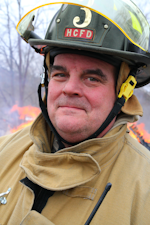
Ed Ballam
Ed Ballam served as associate editor for Firehouse. He is the assistant chief of the Haverhill Corner, N.H. Fire Department, and a National Registered EMT. He is also a Deputy Forest Fire Warden for the New Hampshire Division of Forests and Lands. Professionally, he's been a journalist for over 35 years working for a variety of publications, including employment as managing editor of a national fire service trade journal for more than a decade.
